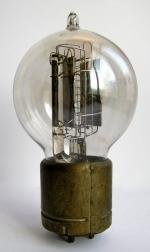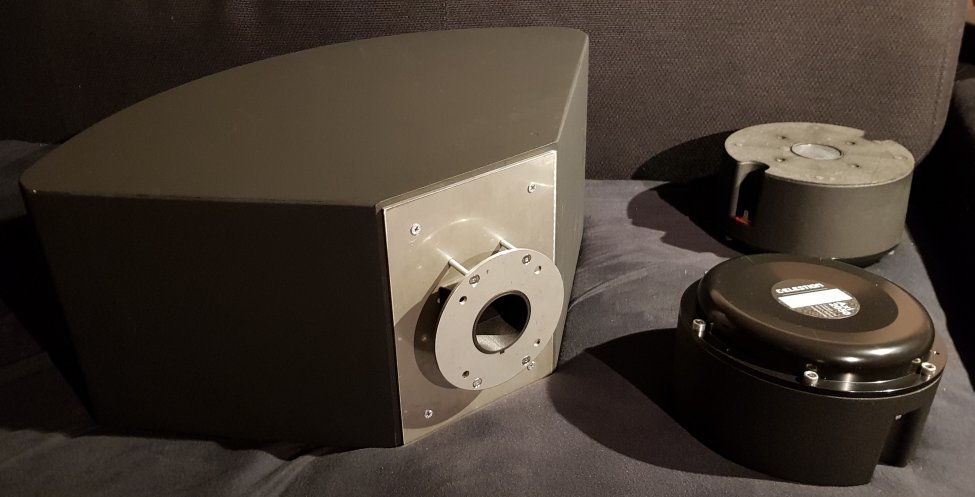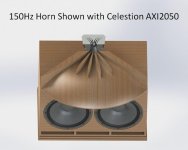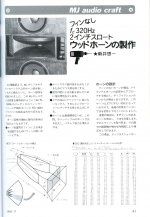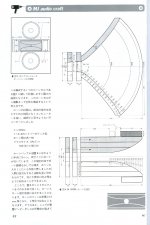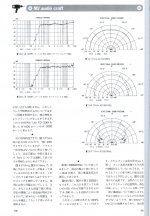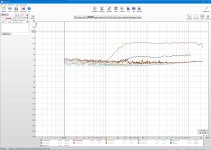In a blogpost on hornspeakersystems.info, Thomas Dunker recommends a book "to anyone interested in the history of engineering and technology, and of course in particular the history of the unique engineering environment that prevailed at the Bell (Telephone) Laboratories for so many years."
You can get it here, if you want to read it over the holidays.

I've only read the first few chapters, but thanks for posting! 🙂
Hard to stop reading...
A great
Attachments
Last edited:
Hi docali,
Just to clarify - are 'flare' and 'flare rate' the same thing, both defined as 1/S * dS/dx?
If not, would you know the definition for flare, as distinct from flare rate?
Thanks.
I was wondering if perhaps the relationship between flare and flare rate was similar to that between velocity and acceleration...
The discussion on flare has been very interesting and informative - I have never had a reason to think about such things before now. Thank you for your valuable input.
Kind regards,
David
Hi David!
Sorry for the confusion. I always intended to say flare rate in my recent posts but in one the word "rate" is missing.
So far as I know the flare shape is the horn propagation of the surface itself and the flare rate what was just discussed.
Thanks docali, for the clarification.
I had been wondering if perhaps flare rate was the rate of change of flare, in the way that acceleration is the rate of change of velocity 🙂.
I had been wondering if perhaps flare rate was the rate of change of flare, in the way that acceleration is the rate of change of velocity 🙂.
In order to keep things simple, I prefer to define horn flare (shape) (without rate) as:
the geometry that defines the horn's surface, e.g. Conical, Exponential, Spherical, Tractrix, Oblate Spheroid(al),... Single Surface etc.
the geometry that defines the horn's surface, e.g. Conical, Exponential, Spherical, Tractrix, Oblate Spheroid(al),... Single Surface etc.
Last edited:
Article on novel constant directivity horn design
The Ciare horn, the accompanying driver, as well as the published paper were previously highlighted in this thread.
The Ciare horn, the accompanying driver, as well as the published paper were previously highlighted in this thread.
Attachments
Last edited:
Some of us wondered about the "box" in front of the Axi2050 that was mounted to Bjørn Kolbrek's mid horn at the European Triode Festival 2017.
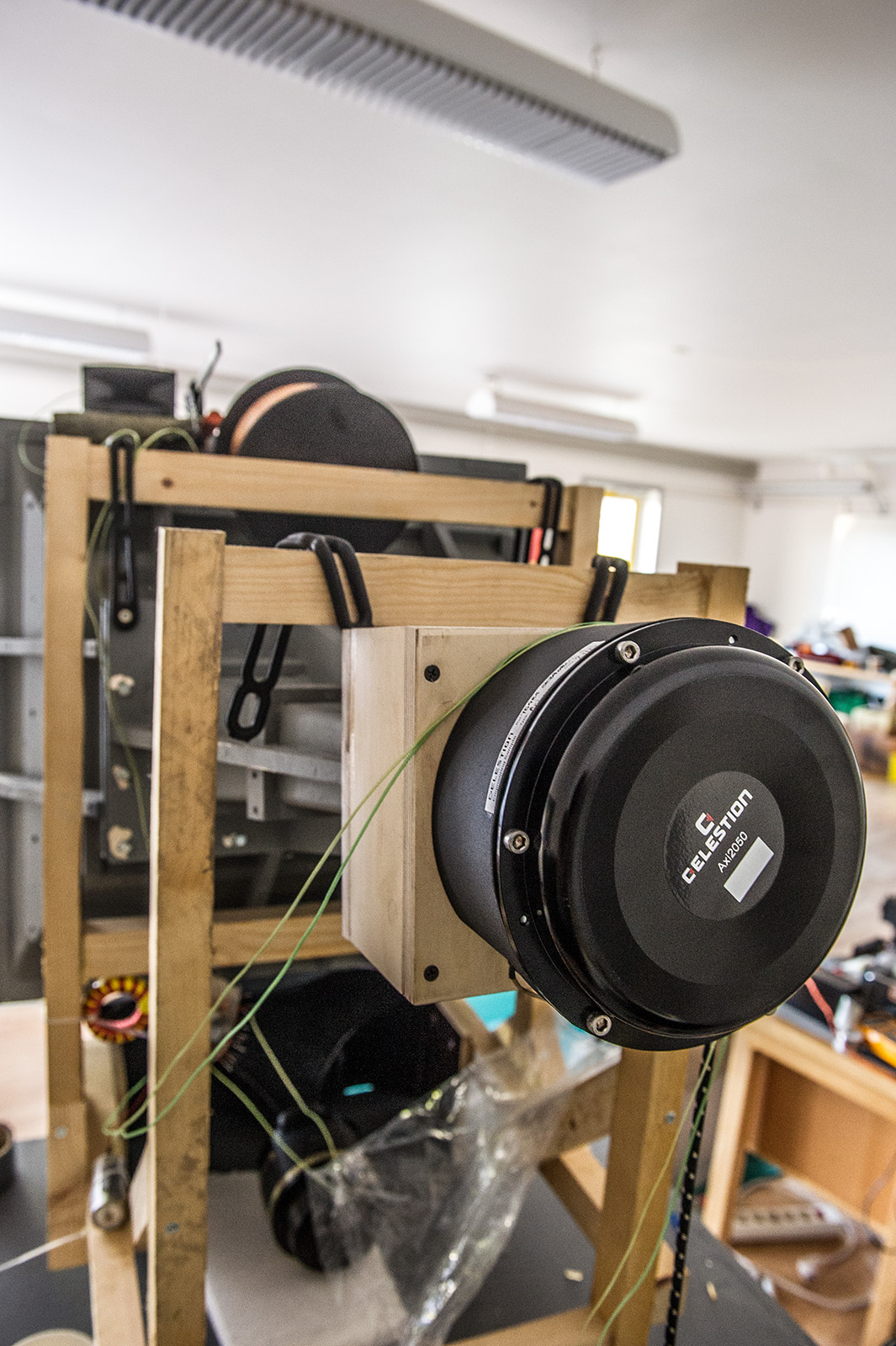
Here's a comment by a member of the Norwegian ETF 2017 crew:
"The Celestion drivers are very good, much better than the (Altec) 288. Bjørn Kolbrek works at Celestion, so he arranged the loan of the drivers, they went straight back to Celestion after the festival.
A new throat section was made for the mid horns to mount the Celestion drivers."
Here's a comment by a member of the Norwegian ETF 2017 crew:
"The Celestion drivers are very good, much better than the (Altec) 288. Bjørn Kolbrek works at Celestion, so he arranged the loan of the drivers, they went straight back to Celestion after the festival.
A new throat section was made for the mid horns to mount the Celestion drivers."
Last edited:
From this paper:
Obviously, the circular horn has more energy because its beam width is focused on axis, while elliptical one have a spread energy around the space because they cover a bigger angle on the Plane A. Due to its structure, the elliptical horns cover a larger area and for this reason, we have an SPL loss.
What? This is a major issue I addressed in my calculator not to happen! This is a similar profile but has strictly the same constainst as the round one by using ellipsoidal construction wave fronts:
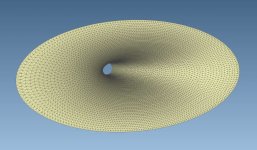
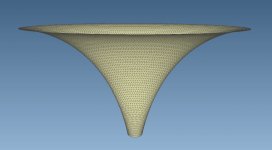
View attachment ciare_01.zip
Does anyone have polar measurements of the Yuichi horn? I still cannot decide if I should have a pair built or not.
Does anyone have polar measurements of the Yuichi horn? I still cannot decide if I should have a pair built or not.
"Yuichi"... Ryūichi Sakamoto !
😀ahahaha.

Joseph Crowe has designed a (kind of) Yuichi to mate with the Axi2050.
Attachments
Last edited:
Yuichi Arai's A320FL article from the May 1992 issue of the Japanese magazine "MJ".
Directivity is supposed to be decent up to 10kHz.
Directivity is supposed to be decent up to 10kHz.
Attachments
Last edited:
I've tried the AXi2050 in A320 up to 9kHz.
Works well, but it needs eq in the top octaves.
Here is how the raw response looks in Audiolense PC based DSP with FIR, measure window;
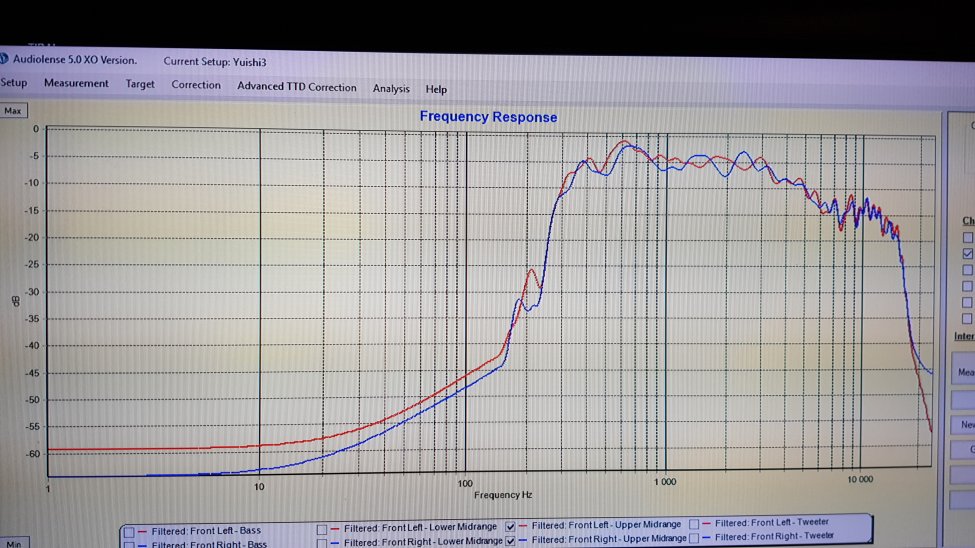
Right now I use it from 650 hz to 5 khz with TAD 2001 in JMLC-2500 over.
Maybe I will try it later with Fostex T-500 mkll from 9-10 kHz.
Works well, but it needs eq in the top octaves.
Here is how the raw response looks in Audiolense PC based DSP with FIR, measure window;

Right now I use it from 650 hz to 5 khz with TAD 2001 in JMLC-2500 over.
Maybe I will try it later with Fostex T-500 mkll from 9-10 kHz.
Thanks to all. I would like to use one from ca 500-600 Hz up without a tweeter. And most probably with a 1.4" driver or a coaxial driver.
I've tried the AXi2050 in A320 up to 9kHz.
Works well, but it needs eq in the top octaves.
Here is how the raw response looks in Audiolense PC based DSP with FIR, measure window;

Right now I use it from 650 hz to 5 khz with TAD 2001 in JMLC-2500 over.
Maybe I will try it later with Fostex T-500 mkll from 9-10 kHz.
These curves let suspect strong break-up modes from 8-9k on which cause generaly a high degree of distortion. Could someone do a precise distortion analysis of this hyped driver up to 20k? I do not think that this driver should be used up to 20k.
Maybe you can use the AXi2050 all up in PA systems in bigger horns, but in my case with a small room and hifi setup with the Yuichi A320 I think the limit is around 9 khz, maybe lower.
Works great in current setup, 650 Hz to 5 kHz, and sounds good.
The Joseph Crowe horn looks interresting, but it's to big for my small room.
Maybe later, in a bigger house/apartment.
Works great in current setup, 650 Hz to 5 kHz, and sounds good.
The Joseph Crowe horn looks interresting, but it's to big for my small room.
Maybe later, in a bigger house/apartment.
These are from Kevins 250hz Jmlc's, I'd have to look up how he did the measurements, I think at 1 meter, not sure. Could be at listening position which is 3 meters.
Attachments
Last edited:
- Home
- Loudspeakers
- Multi-Way
- Is it possible to cover the whole spectrum, high SPL, low distortion with a 2-way?
